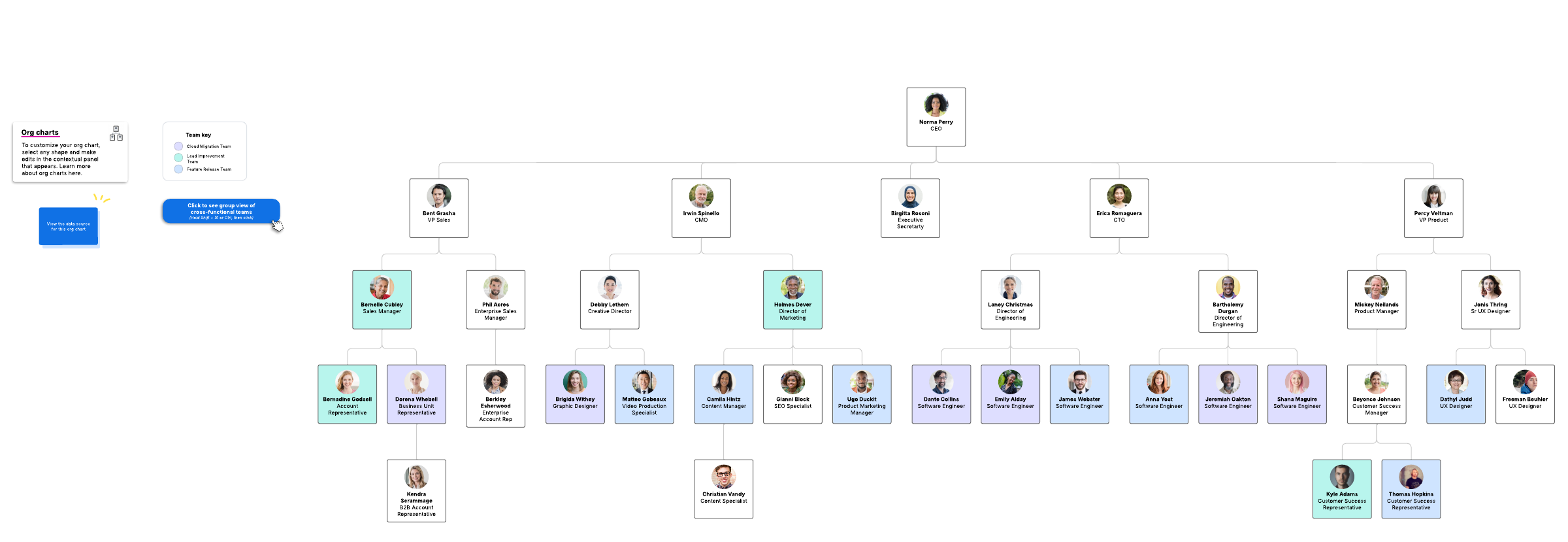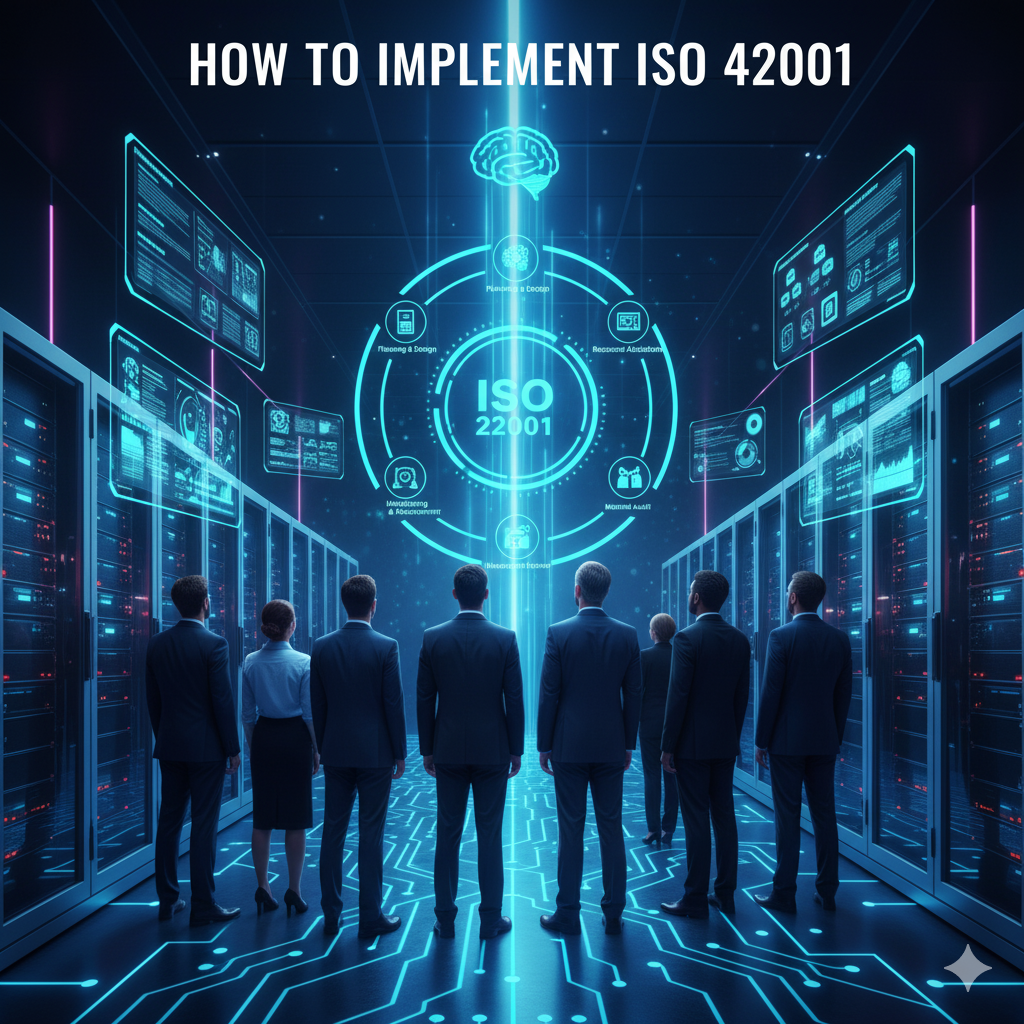AI change management is the strategic process of guiding organizations through the adoption and integration of artificial intelligence technologies while addressing the human, cultural, and operational challenges that arise during transformation.
When companies implement AI systems, they face unique challenges that traditional change management approaches can’t adequately address. AI technologies often operate as complex systems that make decisions through algorithms employees may not understand. The rapid evolution of AI capabilities creates ongoing adaptation requirements rather than one-time transitions.
Organizations discover that successful AI adoption depends on more than just deploying new technology. Research from IBM’s business leaders shows that 80 percent of business leaders view AI explainability, ethics, bias, and trust as major obstacles to generative AI adoption. These concerns highlight why AI implementations require specialized change management approaches.
How AI Change Management Differs From Traditional Approaches
Traditional change management focuses on helping employees adapt to new processes or tools with predictable outcomes. AI change management addresses systems that learn and evolve, creating ongoing uncertainty about how work will change over time.
Standard change initiatives typically have clear endpoints where organizations reach a new stable state. AI implementations require continuous adaptation as machine learning models improve and new capabilities emerge. The McKinsey research notes that organizations must reimagine entire workflows rather than simply adding AI tools to existing processes.
AI systems often function as “black boxes” that make decisions through complex algorithms. Employees struggle to understand how these systems reach conclusions, creating unique communication challenges for change managers. Traditional change management assumes employees can learn specific procedures, while AI change management must help workers collaborate with intelligent AI agents that may behave unpredictably.
Key Components of Effective AI Change Management
Building an AI-Ready Culture
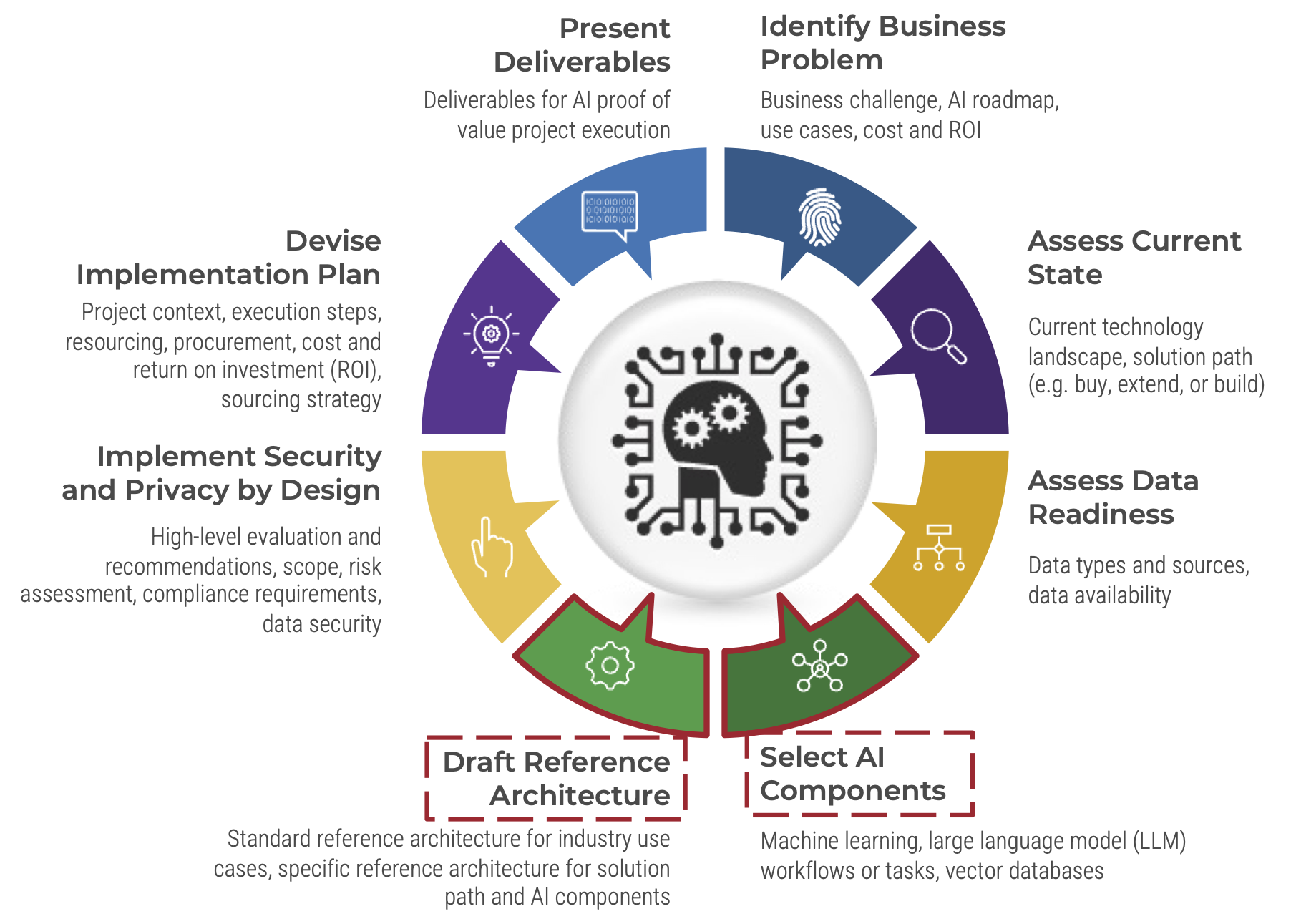
Source: Info-Tech
Developing data literacy across the organization forms the foundation of successful AI transformation. Data literacy means employees can interpret AI-generated insights, understand data quality issues, and make informed decisions based on algorithmic recommendations.
Creating psychological safety allows employees to experiment with AI tools without fear of negative consequences when things don’t work perfectly. This environment encourages rapid experimentation and learning from both successes and failures.
Skills Development and Training
AI literacy training extends beyond basic computer skills to encompass understanding how AI systems work, their limitations, and appropriate use cases. Customer service representatives learn to work alongside AI agents in customer service and leverage generative AI for real-time responses.
Training programs accommodate different learning styles and job functions across the organization:
- Technical staff — require deeper training in AI development, deployment, and monitoring capabilities
- Non-technical employees — focus on effective AI collaboration, prompt engineering, and understanding AI outputs in their specific work contexts
- Managers — develop skills in AI governance, ethical decision-making, and performance measurement in AI-enhanced environments
Governance and Risk Management
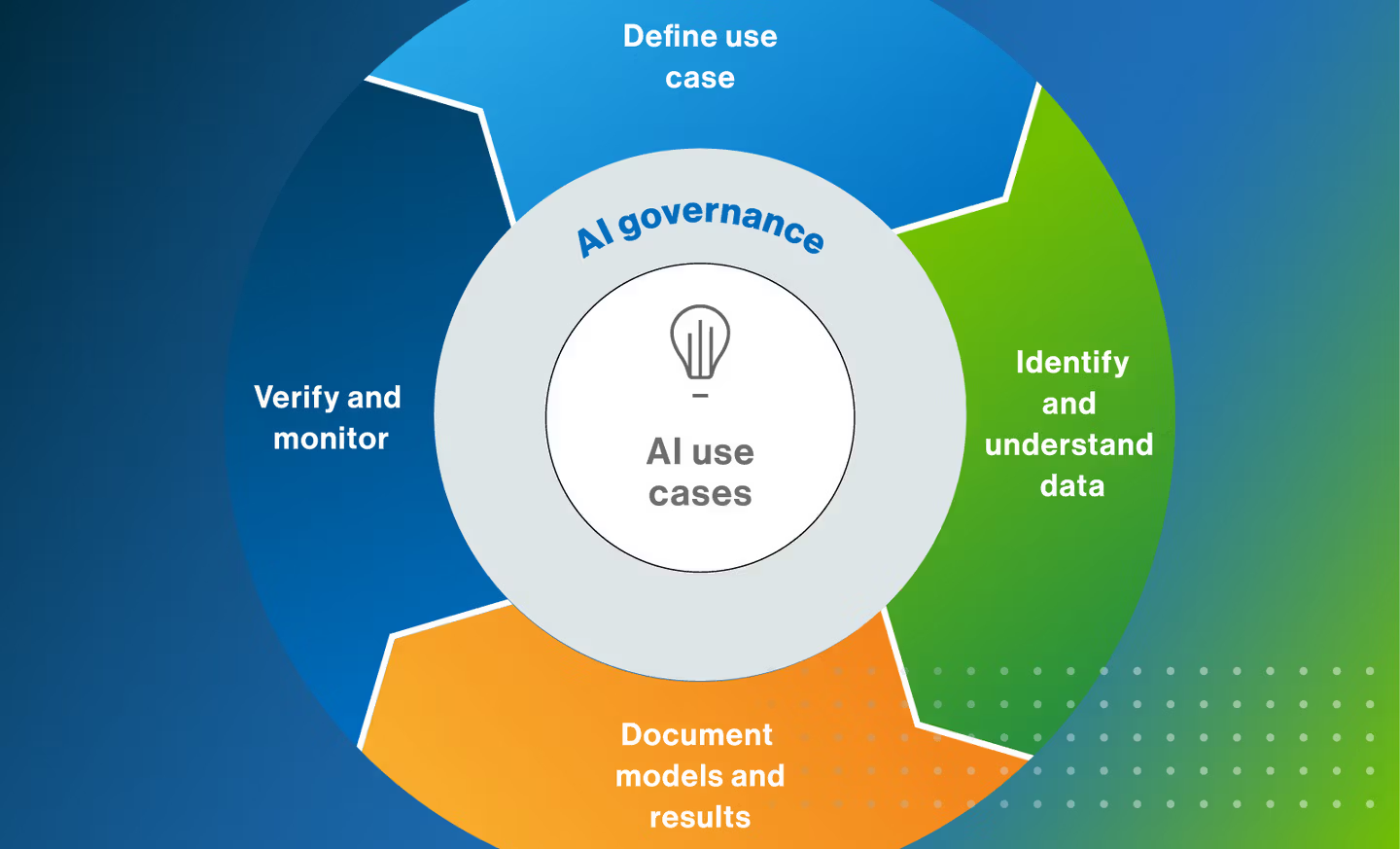
Source: Collibra
AI governance frameworks establish processes, standards, and oversight mechanisms that ensure AI systems operate safely and ethically. These frameworks address risks including algorithmic bias, privacy violations, and decision transparency while fostering innovation within acceptable parameters.
Risk assessment protocols identify and evaluate potential negative impacts of AI implementation. Organizations implement bias detection methods, diverse review teams, and ongoing monitoring to identify problematic patterns before they cause harm.
Communication and Transparency
Transparent communication strategies address the diverse information needs of different stakeholder groups throughout AI implementation. Executives require strategic value and competitive advantage information to make investment decisions. Front-line employees want clear information about how AI affects their daily work and role evolution.
Managing expectations requires honest communication about both AI capabilities and limitations. Organizations acknowledge that AI systems can make errors, may not work perfectly in all situations, and require ongoing human oversight.
Essential Steps for Implementing AI Change Management
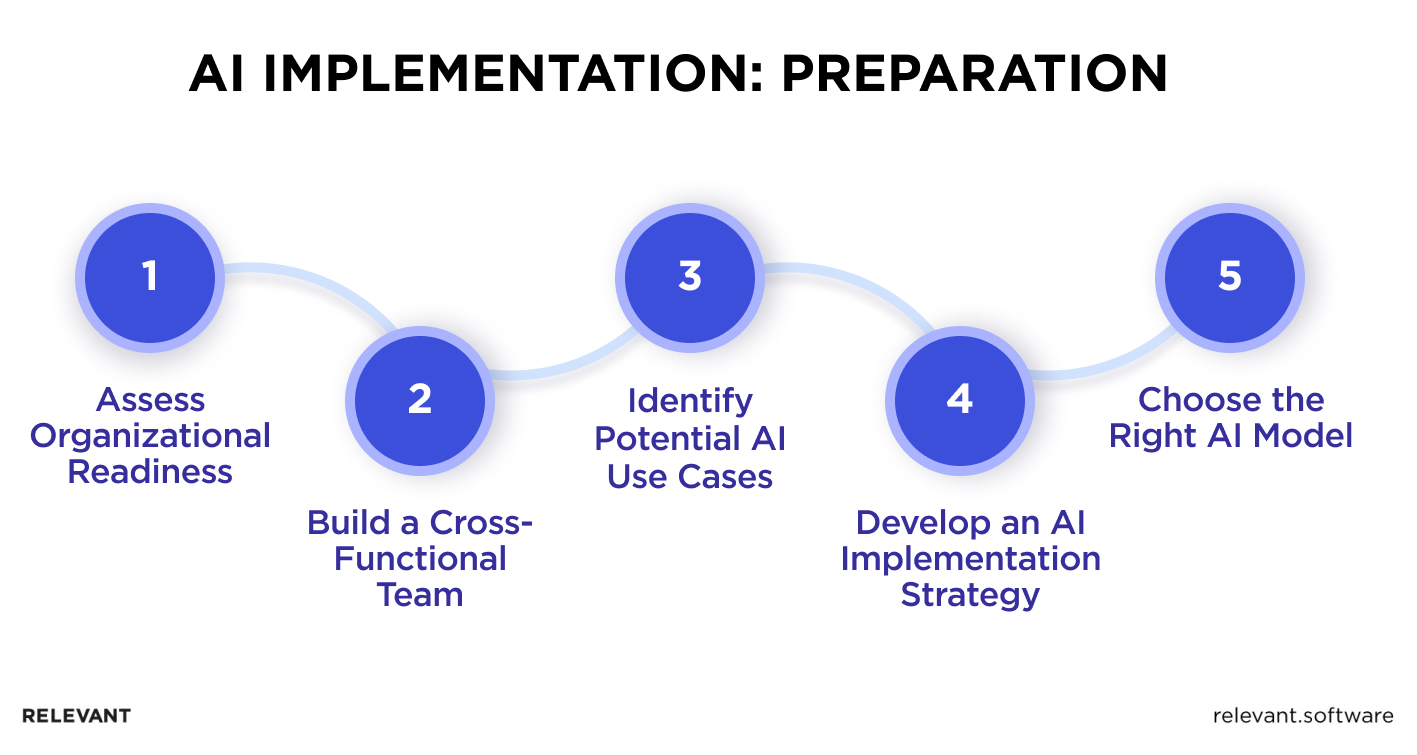
Source: Relevant Software
1. Establish Clear Vision and Strategic Objectives
Organizations begin successful AI transformations by creating a compelling vision that focuses on outcomes rather than tools. This vision articulates how AI will create competitive advantage and transform business operations while remaining simple enough for all employees to understand.
The strategic objectives define specific, measurable goals that align AI initiatives with broader business strategy. These objectives address the likely impact on talent, workflows, and organizational structure.
2. Build Cross-Functional Implementation Teams
Source: Lucid Software
Effective AI implementation requires diverse teams that combine technical expertise, business knowledge, and change management skills. These teams include AI developers, business stakeholders, change champions, legal representatives, and end users who will work with AI systems daily.
Cross-functional collaboration helps identify potential challenges early and develops solutions that address both technical and human factors.
3. Create Comprehensive Training Programs
Training programs address different skill levels and job functions across the organization, moving beyond basic technology training to develop AI literacy, ethical understanding, and human-AI collaboration capabilities.
Support programs provide ongoing assistance through multiple channels, including technical help desks, peer mentoring networks, and resources for continuous skill development.
4. Monitor Progress and Adjust Implementation
Monitoring systems track multiple dimensions of success including technical performance, business impact, user adoption rates, and cultural transformation indicators. These systems measure both quantitative metrics like accuracy and error rates alongside qualitative factors such as employee satisfaction and confidence levels.
Feedback loops collect input from technical monitoring, user experiences, business performance data, and stakeholder observations to identify improvement opportunities.
Overcoming Common AI Change Management Challenges
Managing Employee Resistance
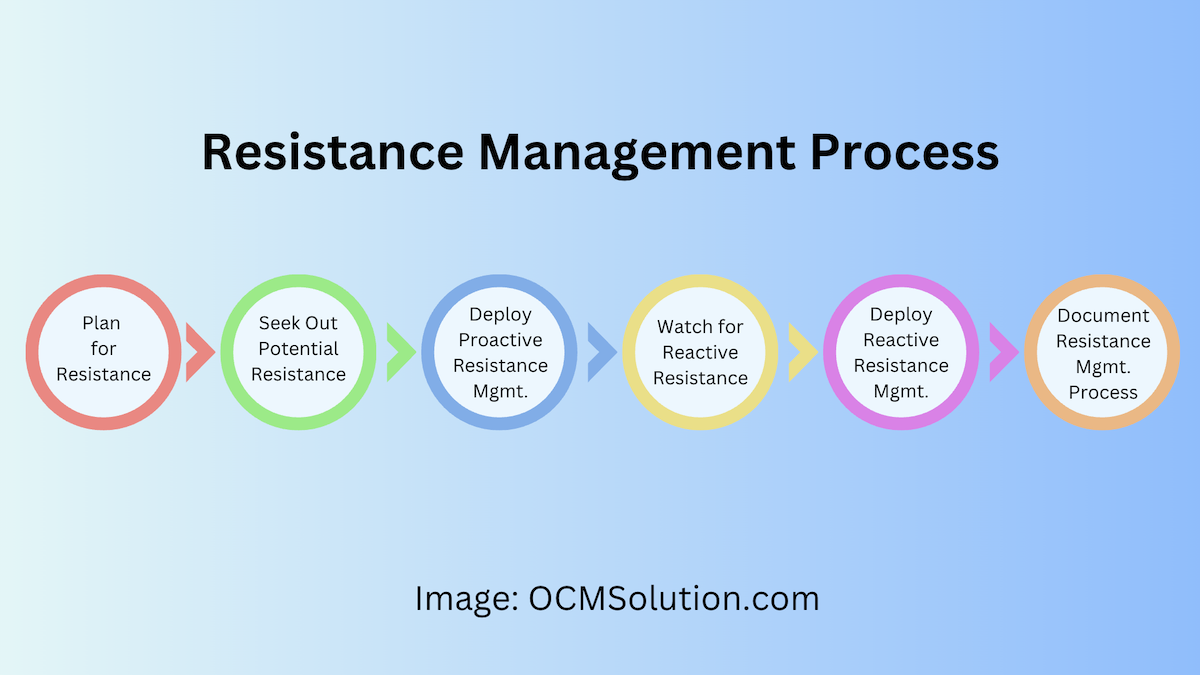
Source: OCM Solution
Employee resistance to AI stems from legitimate concerns about job displacement, workflow disruption, and the complexity of new technologies. Building trust requires transparent communication about AI’s actual impact on roles rather than vague reassurances.
Creating psychological safety allows employees to ask questions, report problems, and experiment with AI tools without fear of negative consequences. This safety emerges when leadership celebrates learning from mistakes and provides support for employees struggling with AI adoption.
Effective resistance management tactics include:
- Establish clear communication channels — for employees to voice concerns and receive specific answers about AI implementation plans
- Create cross-functional AI teams — that include employees from different departments to ensure diverse perspectives in planning
- Provide hands-on training opportunities — in low-risk environments where employees can experiment with AI tools without performance pressure
- Share specific examples — of how AI will change daily tasks rather than speaking in generalities about transformation
Technical Integration and Workflow Issues
AI systems must work alongside existing business applications, databases, and established processes. Integration challenges often emerge when AI tools can’t access necessary data or when their outputs don’t fit into current workflows.
Data quality concerns create significant obstacles because AI systems require clean, consistent, and relevant data to function effectively. Poor data quality leads to unreliable AI outputs, which undermines employee confidence and system adoption.
Process redesign becomes necessary because AI capabilities often require new ways of working rather than simply automating existing processes. Workflows designed for human decision-making may need restructuring to accommodate AI recommendations and human oversight requirements.
Regulatory Compliance and Ethical Concerns
Regulatory requirements for AI continue evolving as governments develop new frameworks for artificial intelligence oversight. The EU AI Act, various national guidelines, and industry-specific regulations create compliance obligations that organizations must address throughout AI implementation.
Ethical AI deployment requires ongoing attention to bias detection, fairness monitoring, and transparency in decision-making processes. Organizations must establish governance structures that ensure AI systems operate according to responsible AI principles and organizational values.
Measuring Success in AI Change Management
Key Performance Indicators for AI Adoption
Organizations track specific metrics to evaluate how well employees and teams adapt to AI systems. These KPIs span technical adoption, employee engagement, and cultural transformation indicators.
Employee engagement metrics include:
- Training completion rates and assessment scores
- Employee satisfaction surveys specific to AI tools
- Self-reported confidence levels in using AI systems
- Retention rates of employees involved in AI initiatives
Adoption rate indicators track percentage of eligible employees actively using AI tools, session frequency and duration for AI applications, and feature utilization rates within AI systems.
ROI Calculation Methods

Source: Techstack
ROI calculation for AI change management encompasses both direct financial returns and indirect value creation. Direct cost savings calculations include reduced labor costs for automated processes, decreased error correction expenses, and eliminated manual task overhead.
Productivity measurements evaluate output increases per employee, faster decision-making cycles, and improved resource allocation efficiency. Organizations calculate these metrics by comparing pre-implementation performance data with post-implementation results across consistent time periods.
Continuous Improvement Strategies
Regular pulse surveys capture employee experiences with AI tools, identifying friction points and improvement opportunities. Monthly or quarterly assessments track changing attitudes, skill development progress, and emerging support needs across different user groups.
Performance data analysis reveals patterns in AI system usage, highlighting successful adoption strategies and areas requiring additional support. Organizations examine usage analytics, error rates, and user behavior patterns to understand how AI integration affects daily operations.
AI Governance and Risk Management in Change Management
Ethical AI Implementation Guidelines
Bias mitigation begins during the data collection and model training phases of AI development. Development teams examine training datasets for potential biases related to demographics, geography, or other factors that could lead to unfair outcomes.
Fairness considerations extend beyond technical metrics to include broader questions about how AI systems affect different stakeholders. Organizations evaluate whether AI implementations create equitable outcomes for employees, customers, and community members.
Compliance and Regulatory Considerations
The NIST AI Risk Management Framework provides structure through four functions: GOVERN, MAP, MEASURE, and MANAGE. Organizations use this framework to establish systematic approaches to AI risk management throughout implementation.
Documentation requirements form a central component of AI compliance programs. Organizations maintain records of AI system development processes, training data sources, performance testing results, and ongoing monitoring activities.
Ongoing Risk Monitoring
Continuous monitoring systems track AI performance metrics including accuracy, response times, and error rates. Automated alerts notify relevant teams when systems deviate from expected performance parameters.
Model drift detection identifies when AI system performance degrades over time due to changes in underlying data patterns or business conditions. Monitoring systems compare current outputs against historical performance and flag significant variations.
Getting Started With Your AI Transformation Journey
Beginning an AI transformation requires careful planning and structured implementation. Organizations typically start by conducting an AI readiness assessment to evaluate current capabilities, data infrastructure, and organizational culture.
Change management planning begins early in the AI journey. Effective change management addresses employee concerns, provides comprehensive training programs, and establishes governance frameworks. Organizations that invest in change management are more likely to exceed AI initiative expectations.
Technical implementation follows a phased approach. Organizations often start with pilot projects in low-risk areas to build confidence and demonstrate value. These pilots provide learning opportunities that inform larger-scale deployments across the organization.
Professional AI consulting services can accelerate transformation by providing expertise in change management strategies, technical implementation, and organizational readiness assessment.
Frequently Asked Questions About AI Change Management
How Long Does AI Change Management Implementation Take for Most Organizations?
AI change management timelines vary significantly based on organization size, complexity, and scope of transformation. Most implementations span six months to two years for complete cultural transformation.
Small organizations with straightforward AI implementations may complete basic change management activities within six to nine months. Large enterprises with complex operations typically require eighteen to twenty-four months to achieve comprehensive organizational transformation.
Organizations view AI change management as an ongoing capability rather than a finite project with a clear endpoint. The most successful organizations plan for continuous adaptation beyond initial implementation.
What Budget Do Organizations Typically Allocate for AI Change Management Activities?
Organizations typically invest fifteen to twenty-five percent of their total AI project budget specifically on change management activities and training programs. Change management costs include employee training programs, communication campaigns, stakeholder engagement activities, and dedicated change management personnel.
Organizations with limited change management budgets often experience higher resistance rates and slower adoption timelines, ultimately increasing total project costs through delays and reduced effectiveness.
Can Small Businesses Apply AI Change Management Strategies Effectively?
Small businesses can benefit from AI change management approaches, often with simplified frameworks that focus on core elements like training and communication. Small organizations typically require less complex governance structures and can implement changes more rapidly than large enterprises.
Simplified frameworks for small businesses emphasize direct communication between leadership and employees, focused training programs, and streamlined decision-making processes. Small businesses often achieve faster adoption rates because they can make decisions quickly and implement changes without extensive bureaucratic processes.
How Do Organizations Handle AI Change Management in Remote Work Settings?
Remote AI change management relies heavily on digital communication tools, virtual training programs, and enhanced documentation to ensure consistent implementation across distributed teams. Organizations use video conferencing platforms, collaboration software, and learning management systems to deliver change management activities.
Virtual training programs require more structured approaches with interactive elements to maintain engagement and ensure comprehension. Organizations often break training into shorter sessions, provide recorded content for self-paced learning, and create virtual practice environments where remote employees can experiment with AI tools safely.
Enhanced documentation becomes critical in remote environments, as employees can’t rely on informal conversations or quick consultations. Organizations create comprehensive resource libraries, frequently asked question databases, and virtual help desk systems.
AI change management represents a fundamental shift in how organizations approach technological transformation. Success depends on integrating governance, skills development, trust building, and cultural change into comprehensive transformation strategies that evolve alongside advancing AI capabilities.


